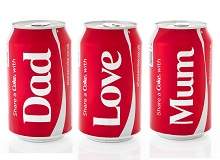
Millennials – those born between 1980 and 2000 – are set to take over the consumer market in the coming years. In fact in the US Millennials overtook the Baby Boomers to become the nation's largest living generation and it is estimated that Millennials will constitute nearly half of the European workforce by 2025.
Unlike previous generations, this new group of tech-savvy consumers present a host of new challenges for the packaging sector, such as social trends, online shopping, and cultural shift away from brand loyalty. As consumers become more focused on the experiential impact of packaging, companies have to rethink the way that packaging is appeals to Millennials, GenX and Baby Boomers.
In the US alone, Millennials are expected to spend approximately $65 billion on consumer-packaged goods over the next decade, which makes them one of the most important cohorts for grocery stores and retailers. The coming-of-age of this new market offers a major opportunity for retailers and brand owners to attract new consumers. But how much do we know about this new wave of consumers? We spoke to Virpi Korhonen, managing director for the Association of Packaging Technology and Research, to find out more.
Eloise McLennan: What are the main factors that Millennials look for in packaging?
Virpi Korhonen: The millennials show a high interest in their personal health, ethical products, as well as the state of the environment. They are also highly aware and concerned both with the safety and the environmental impacts of products they eat or use.
In packaging they value the basic functions of packaging, i.e. the information, convenience and protection in terms of product safety and hygienity. Environmental issues are also highly considered when making a choice for a product. These facts mean great responsibilities for packaging – in terms of providing applicable product information, sustainable materials, as well as the ability to preserve and protect products and minimise waste.

US Tariffs are shifting - will you react or anticipate?
Don’t let policy changes catch you off guard. Stay proactive with real-time data and expert analysis.
By GlobalDataIn addition to these, the millennials experience value of the emotions, experiences, and impressions provided by packages. They like to shop in stores where products are nicely displayed and they become excited about new packaging. They also openly admit that packaging persuades them to buy new products.
EM: How is this different to previous generations?
VK: Significantly higher emphasis is given to the experiential value of packaging in compared to the previous generations. The millennials experience higher value from packaging than the previous generations. Yet, a nice package cannot save a bad product, but a bad one can destroy it. And with the millennials the odds are higher.
EM: What main trends influence the packaging Millennials are drawn to?
VK: My guesses are personalisation, such as 'Share a Coke', augmented reality, for example Juice Burst, and versioning for example Disaronno or Coke wearing Versace. Overall novelty can act as a gimmick to make a purchase.
EM: How is social media influencing the way that the Millennial generation views packaging?
VK: I think the biggest influence is that packages create experiences, and experiences are shared on social media. So packages that containing expressive value in terms of expressing your lifestyle, values, and personality, are appreciated and likely to be shared.
EM: How much has the rise in internet access affected the way we view packaging?
VK: As e-commerce is growing, more products will be purchased online and less purchasing decisions are made in store. This is why the post-purchase experiences provided by packaging (both while using the package as well as during disposal) are gaining more emphasis. The product selections are global and with digital printing, you should be able to order your product in any kind of packaging you like. Not many brands yet gain competitive advantage from this; I personally perceive it as a great opportunity.
EM: We've seen a lot of shareable and social media content, such as hashtags and personalised labels, appearing on packaging. Why is this?
The majority of all brand contacts with consumers are done though packaging, social media, people walking with your branded bags, i.e. free advertising. Disruptive packaging is a cost-efficient way to gain free advertising for your product. Share a Coke campaign is one of the most successful examples of this.
Packages are interfaces for products, gaining access to places any other media can ever enter. If I was a brand owner, I would apply packaging for collecting consumer data, product feedback, and communicating with my customers. Some brands have seized this opportunity. The millennials feel comfortable with the newest technology, so why not to take the full benefit from your investment in packaging.
EM: How can packaging companies adapt to appeal to the Millennial generation?
VK: By designing high-quality and iconic packaging and seeing packaging as an investment, packaging is becoming the most used printed media that appeals to all your senses.



